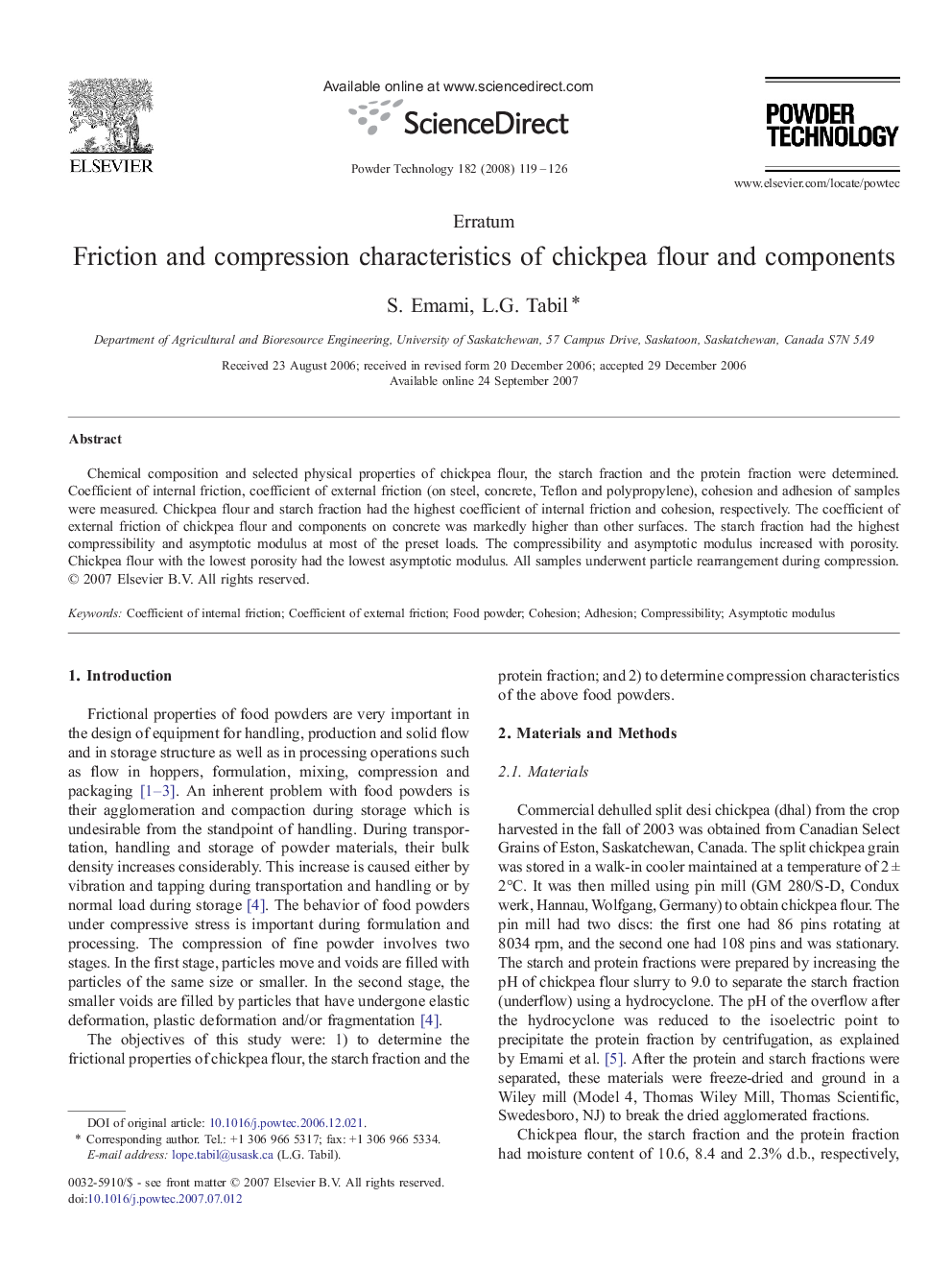| Article ID | Journal | Published Year | Pages | File Type |
|---|---|---|---|---|
| 238663 | Powder Technology | 2008 | 8 Pages |
Chemical composition and selected physical properties of chickpea flour, the starch fraction and the protein fraction were determined. Coefficient of internal friction, coefficient of external friction (on steel, concrete, Teflon and polypropylene), cohesion and adhesion of samples were measured. Chickpea flour and starch fraction had the highest coefficient of internal friction and cohesion, respectively. The coefficient of external friction of chickpea flour and components on concrete was markedly higher than other surfaces. The starch fraction had the highest compressibility and asymptotic modulus at most of the preset loads. The compressibility and asymptotic modulus increased with porosity. Chickpea flour with the lowest porosity had the lowest asymptotic modulus. All samples underwent particle rearrangement during compression.
Graphical abstractChemical composition and selected physical properties of chickpea flour, the starch fraction and the protein fraction were determined. Coefficient of internal friction, coefficient of external friction (on steel, concrete, Teflon and polypropylene), cohesion and adhesion of samples were measured. Chickpea flour and starch fraction had the highest coefficient of internal friction and cohesion, respectively. The coefficient of external friction of chickpea flour and components on concrete was markedly higher than other surfaces. The starch fraction had the highest compressibility and asymptotic modulus at most of the preset loads. The compressibility and asymptotic modulus increased with porosity. Chickpea flour with the lowest porosity had the lowest asymptotic modulus. All samples underwent particle rearrangement during compression.
